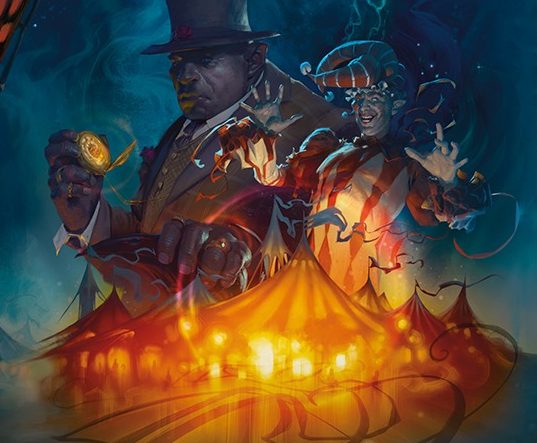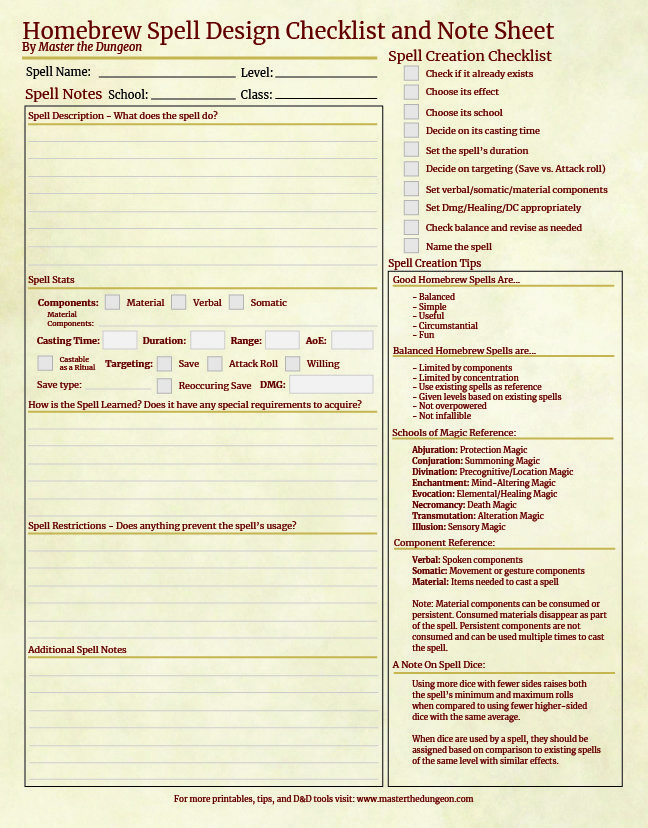One of the most appealing and rewarding parts of Dungeons and Dragons is using your imagination to bring your setting to life. There are not a lot of guidelines on how to do so within the official sourcebooks. But have no fear; a DM with over 30 years of experience and multiple homebrewed settings can be your guide for this particular side of D&D experience.
This article will discuss creating custom spells for D&D 5E, although these methods can be used for any of the editions. We will look briefly at the reasons behind creating custom spells and then discuss two distinct approaches for doing so.
Why Create Your Own Spells?
Why would a DM or a Player custom-create (or “homebrew”) their own spells? It boils down to one of two answers. First, the DM wants to contribute to a unique feel in their setting, or a player wishes to add a unique flavor to their character.
The second reason is that there simply isn’t a spell that does exactly what they wish it could do. If you are a player, be sure to work with your DM to include any of your creative ideas into the story or setting of your game session.
There are two methods for resolving these types of issues. The first method is reskinning or tweaking existing content to fit your needs. With over 450 official spells available in D&D 5E, there is a wide range of good ideas and starting points. This does not even include spells from the Unearthed Arcana, previous editions, or official and unofficial third-party content.
Reskinning an Existing Spell

Reskinning or making a small change to an existing spell is relatively easy and is the most common way of addressing the creative needs of GMs and their players. Still, before you start working on this, check if the spell you envision, or otherwise something very similar to it, already exists – as I just said, there is a lot of variety, and making yourself aware of what is already available might completely change your mind. Even if you end up going through with the idea, acquainting yourself with existing spells could go a long way in helping you create your own.
Often, a simple tweak or change is enough to give you the desired outcome. It could involve as little as changing the spell’s type of damage, such as changing a Fireball into an Ice Ball. Some minor changes to adjust the spell to your needs can include changing the time needed to cast the spell, what class can cast the spell, the duration, or raising/lowering the damage. These simple tweaks allow for a wide range of effects without significantly changing most spells.
The tweak can also involve being more straightforward in describing the magic when used. For example, one of my favorite characters I’ve played was a wizard who studied Necromancy. I wanted to play into the feel of Necromancy, but I had Magic Missile as one of the spells – not a pretty menacing staple of the occult. My DM allowed me the freedom to describe what the spell looked like. So, instead of little balls or darts of green energy, I described it as a black mist that shot out three purplish laughing skulls that streaked towards the target. Nothing else was changed about the spell, and it worked perfectly to fit what I desired for my character.
Creating a Unique Spell from Scratch
I use six steps to homebrew a unique spell if Reskinning an existing spell isn’t sufficient for my needs. While the intent of each step is pretty simple, the actual process can be a bit complicated and time-consuming. We will cover some considerations to make it easier for you as a DM (or player).
Step 5: Playtesting and Final Tweaks

Step five is to playtest and ask for advice or feedback from other content creators, DMs, and players. How much guidance and feedback you want to receive will depend on the use of the spell. If it is for one character or a minor part of the setting, you can manage with just the feedback from your gaming group.
However, if this homebrew project will be used for commercial purposes or is a significant part of your setting, you likely want to get a wide range of opinions from various DMs and players. The online TTRPG community is often an excellent tool for feedback of this type. Be prepared for this part of the process to be time-consuming, as you want a wide range of opinions and as much feedback as possible before making final tweaks to your custom spell. However, it’s definitely worth it.
The final step in the process is to tweak the spell if needed. This usually entails some minor changes to reflect the feedback you have received and polishing the spell to make it suitable for use at your gaming table.
By following this process, you should have at least created the base for a unique and flavorful spell perfect for your setting or character. I hope that this process has guided you in bringing your imagination to life and enhanced your game sessions.

Thanks for this! I quite enjoyed reaeing it, you are great.
I will make certain to bookmark your blog and may come
ack down the road.